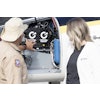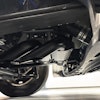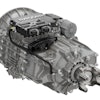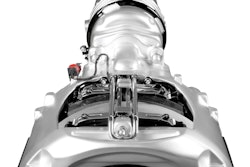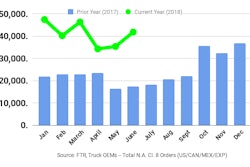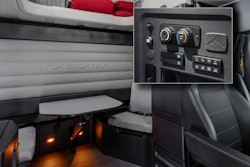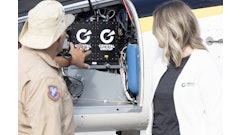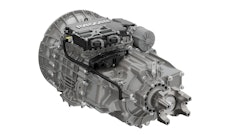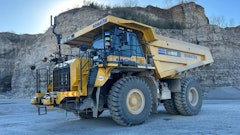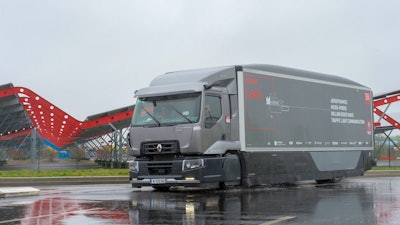
After 8 months of development and 7 months of testing with its lab vehicle Urban Lab 2, Renault Trucks has measured a reduction of 12.8% in fuel consumption and CO2 emissions in urban and peri-urban environments, compared to a serial vehicle. This result has been achieved through optimization of the aerodynamics, driveline, tires and vehicle/infrastructure communication.
Reduced fuel consumption and CO2 emissions of its vehicles remains at the heart of Renault Trucks' concerns. Launched in 2016, the collaborative project EDIT - Efficient Distribution Truck, gathered around Renault Trucks' six partners: Valeo, Lamberet, Michelin, BeNomad, INSA Lyon (LamCoS), IFSTTAR (LICIT). The EDIT project aimed to reduce consumption by 13% on a truck for urban and regional use, under controlled temperature. The Urban Lab 2 laboratory vehicle was born from this project. After 7 months of testing and 4,500 km traveled on an open road or on a chassis dynamometer, the assumptions made before the project were validated. Urban Lab 2 shows a reduction in consumption of 12.8% compared to the reference Renault Trucks D Wide, i.e. 3.5 L of fuel and 9 kg of CO2 saved per 100 km.
Test cycle and measurement method
To build a test cycle that is statistically representative of temperature-controlled distribution use, Renault Trucks engineers used a database of more than 8,000 km of measurements.
This cycle, on an open road, consists of 12 km in urban areas, 50 km in the region and 57 km on the motorway.
Before the tests, Urban Lab 2 and the reference vehicle were run on the chassis dynamometer and a detailed performance check of the drivelines of the two vehicles was established to ensure the representativity of the two vehicles used for the project. 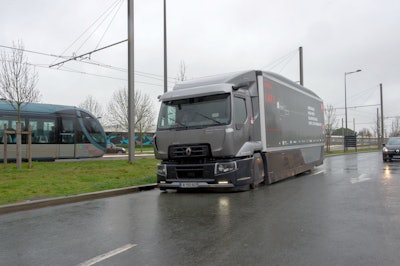
The tests consisted of road tests, test bench tests (where road and temperature conditions are simulated, controlled and reproducible) and simulation to correlate measurements. In parallel, tests were carried out with a reference vehicle whose geometric and kinematic characteristics were similar to the laboratory vehicle (D Wide of 19 t and 280 hp, equipped with a Lamberet refrigerated box). Each of the technologies developed in the project has been independently assessed.
Evaluation of aerodynamic gain
Renault Trucks worked with Lamberet on an aerodynamic approach to the truck and the refrigerated box.
In order to improve the flow of air, the evaporators were integrated into the roof of the body and the refrigeration unit was installed in the wheelbase of the vehicle. Aerodynamic equipment has been added, such as rear wing and liftable textile fairings co-designed by Renault Trucks and Lamberet. Pedestal gates, wheel fairings, roof spoiler, spoiler and cab side fairings were also added. Finally, a camera system replaces conventional mirrors.
Gains related to aerodynamic equipment were measured on the highway portion of the test cycle. These measurements were made early in the morning to avoid wind disturbances whose speed was recorded at three different points, in order to verify that the climatic conditions were similar for Urban Lab 2 and the reference vehicle. The test protocol was repeated seven times to ensure the reliability of the results.
Based on the results obtained, a correlation was performed by simulation to measure gains over the entire cycle. The difference in curb weight and power consumption between the two vehicles was taken into account in the simulations.
The results of these tests have confirmed that the optimization of aerodynamics is one of the main levers to reduce the fuel consumption and CO2 emissions of a distribution vehicle, especially when it is operated in a perimeter environment.
Integration of the micro-hybrid system
A device combining micro-hybrid technologies and Stop & Start, designed with Valeo, has been tested on Urban Lab 2.
Several strategies of operation of the micro-hybrid system have been tested in order to maximize the energy recovered during braking, but also in the phases of foot-lift. In addition, a lot of work has been done on engine stop / restart strategies to reduce the duration and minimize the vibrations that result.
The consumption tests of the micro-hybrid system were carried out on a chassis dynamometer, according to three modes:
- without the micro-hybrid system, in standard configuration;
- with the micro-hybrid system, without the Stop & Start system;
- with the micro-hybrid system and the Stop & Start system.
Stop & Start and micro-hybrid tests have confirmed significant consumption gains, especially in urban areas.
